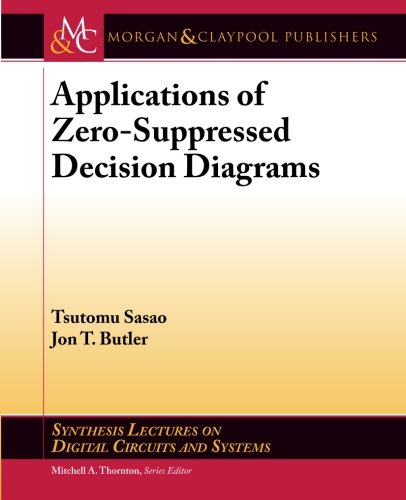

Most ebook files are in PDF format, so you can easily read them using various software such as Foxit Reader or directly on the Google Chrome browser.
Some ebook files are released by publishers in other formats such as .awz, .mobi, .epub, .fb2, etc. You may need to install specific software to read these formats on mobile/PC, such as Calibre.
Please read the tutorial at this link: https://ebookbell.com/faq
We offer FREE conversion to the popular formats you request; however, this may take some time. Therefore, right after payment, please email us, and we will try to provide the service as quickly as possible.
For some exceptional file formats or broken links (if any), please refrain from opening any disputes. Instead, email us first, and we will try to assist within a maximum of 6 hours.
EbookBell Team

4.0
46 reviewsA zero-suppressed decision diagram (ZDD) is a data structure to represent objects that typically contain many zeros. Applications include combinatorial problems, such as graphs, circuits, faults, and data mining. This book consists of four chapters on the applications of ZDDs.
The first chapter by Alan Mishchenko introduces the ZDD. It compares ZDDs to BDDs, showing why a more compact representation is usually achieved in a ZDD. The focus is on sets of subsets and on sum-of-products (SOP) expressions. Methods to generate all the prime implicants (PIs), and to generate irredundant SOPs are shown. A list of papers on the applications of ZDDs is also presented. In the appendix, ZDD procedures in the CUDD package are described.
The second chapter by Tsutomu Sasao shows methods to generate PIs and irredundant SOPs using a divide and conquer method. This chapter helps the reader to understand the methods presented in the first chapter.
The third chapter by Shin-Ichi Minato introduces the "frontier-based" method that efficiently enumerates certain subsets of a graph.
The final chapter by Shinobu Nagayama shows a method to match strings of characters. This is important in routers, for example, where one must match the address information of an internet packet to the proprer output port. It shows that ZDDs are more compact than BDDs in solving this important problem.
Each chapter contains exercises, and the appendix contains their solutions.
Table of Contents: Preface / Acknowledgments / Introduction to Zero-Suppressed Decision Diagrams / Efficient Generation of Prime Implicants and Irredundant Sum-of-Products Expressions / The Power of Enumeration--BDD/ZDD-Based Algorithms for Tackling Combinatorial Explosion / Regular Expression Matching Using Zero-Suppressed Decision Diagrams / Authors' and Editors' Biographies / Index